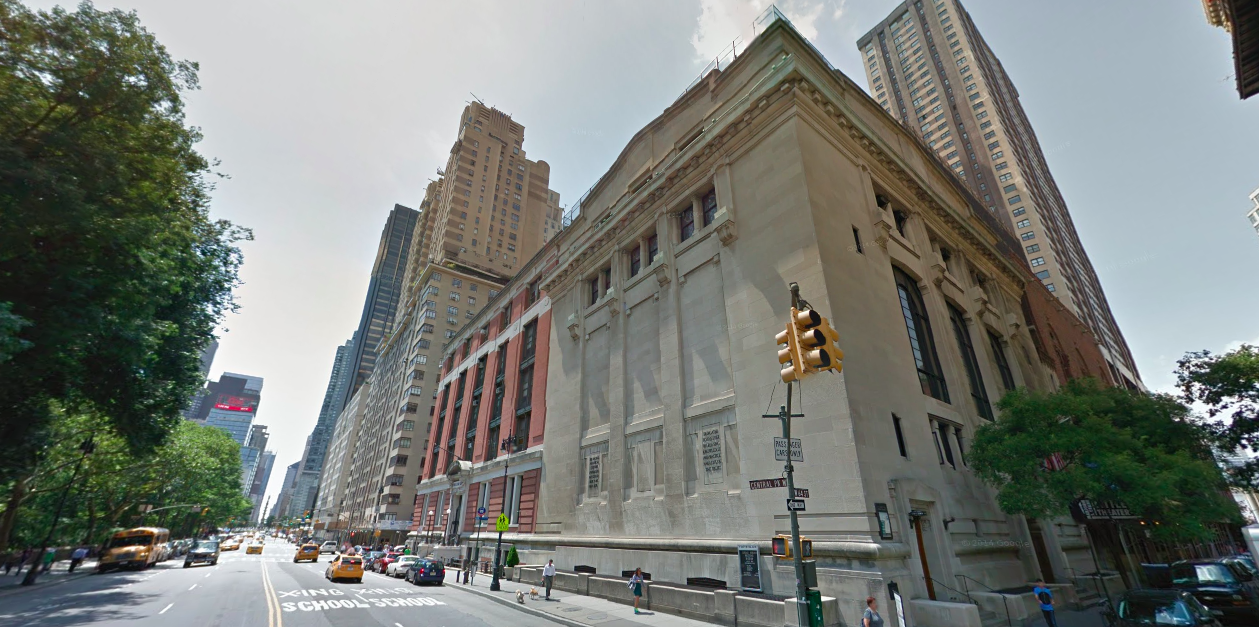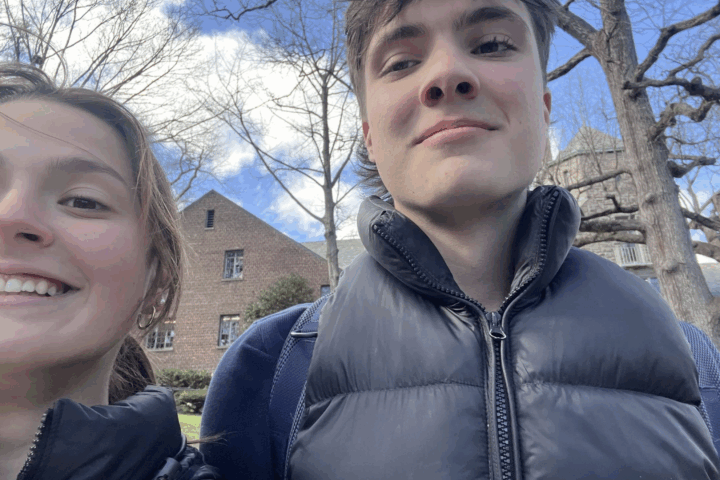
Contrary to the belief of many Fieldston students, The New York Society for Ethical Culture is not housed in the small building sitting across from “the rock.” The Society—imagined and founded by Felix Adler—lives on at 33 Central Park West, though it is now distinct from the Ethical Culture Fieldston School. Founded by Adler in 1876 (two years before the “Workingman’s School” that would become ECFS), NYSEC, according to its website, “is the cornerstone of the Ethical movement.”
Andra Miller, the current president of NYSEC, joined the Society in 2002. Before she knew much at all about the Society, Miller went to a concert at the institution’s auditorium and immediately fell in love with the infectiously energetic sermons and hymns that were being delivered. As she puts it, “I was raised in the Presbyterian faith…but I had real trouble trying to truly believe in the God we prayed to [growing up]. The miracles of The Bible seemed like the magic of fairy tales. But I did want to be a good person.” And so Miller accepted NYSEC as her new church, enjoying a diverse place in which she could seek the highest without having to praise a higher being. As she describes it, “[The Society]” is a place where God is not called upon—a place that leaves your beliefs up to you and just concentrates on helping you to lead a good life and find ways to contribute to making a better world.”
Fritz Williams, Leader Emeritus of the Baltimore Ethical Society, has a similar outlook on the nature of Ethical Culture ideologies in general and the role that they play in the lives of their devotees. “Ethical Culture is a uniquely modern religion,” Fritz says. “It’s an intelligent and practical alternative to conventional religion that is based on reason, compassion, and a vision of a better world. It’s a community of people working together to lay a religious and ethical foundation for their lives without having to subscribe to supernatural beliefs.”
The New York Society for Ethical Culture was established by Felix Adler as a place for people to work collaboratively and progressively to better the world around them—which, Miller says, was part of Adler’s aim of “bringing out the best” in people. Some of the Society’s members have gone on to powerfully influence and/or found organizations for social change. For example, NYSEC leaders have gone on to help form the Visiting Nurse Service, the American Civil Liberties Union, the National Association for the Advancement of Colored People, the Legal Aid Society, the New York Committee to Abolish Capital Punishment, and, of course, the Ethical Culture Fieldston School.
Today, NYSEC continues to inspire and influence the betterment of society. Miller states that the organization’s newest project is a service that provides a platform for children to “visit” with incarcerated parents over the Internet. “Visiting in prisons is a terrible experience,” Miller says, “and getting to [prisons] upstate is nearly impossible for many. This supervised ‘televisiting’ service helps keep a family together, and we expect it to have an effect on the recidivism problem.”
The Society is working on this “televisiting” program through its social service branch—United Services of NYSEC—which exists “to establish and maintain programs to help those in need,” claims Miller. She notes that “there are many other services of USS, an offshoot of the Society started by Felix Adler himself.”
Outside of social work, the Society has recently hosted several educational programs, including a seminar on criminal justice. NYSEC has also worked with other associations on major projects. In particular, the Environmental Stewardship Committee, another arm of NYSEC, is currently busy working with a conglomerate of various environmental groups on projects centered around keeping New York free of hydrofracking (an environmentally damaging process in which rock is broken up by pressurized liquid to produce energy), while the Society’s Ethical Action members are lobbying to increase the minimum wage. Just as they were almost 140 years ago, the Society’s goals “are to search out and promote alternatives to the tendency to ignore the plight of those left behind in the race to acquire riches,” Miller believes.
Until nineteen years ago, leaders from the Society would teach ethics classes at Fieldston. As former Fieldston student and ECF board of trustees co-chair Nina Freedman (class of ’73) remembers, “the content [taught by the Society’s members] was not related to school work…the classes were taught more like college lectures.” The Society once had such a presence at Fieldston that when Ms. Freedman was in high school, the middle school boys’ P.E. teams were given names of past society legends and leaders. But in 1995, as the ECFS website says, “the New York Society for Ethical Culture voted to approve a legal separation of the School from the Society, defining a new affiliation as independent entities.” Says Freedman, “ECFS needed to be its own not for profit institution and it also needed its governance structure to parallel other independent schools. But when the separation documents became official, all the celebrated history, love and loyalty between the two institutions remained intact.”
Freedman’s father was a member of the Board of Governors (known as the “Board of Trustees” ever since the School and the Society separated) in the late sixties, which in those days meant he was also a society member–so NYSEC has a special place in her heart. She (Freedman) believes that ECFS owes much of its identity and “magnificent history of the Workingman’s School” to NYSEC. As she says, “The commitment of the Society to work in the human services is something we should celebrate and support whenever possible, maybe by even linking our service learning with their work.”
Andra Miller shares Freedman’s desire to restore a sense of fellowship between ECFS and NYSEC. “I expect Dr. Adler would be disturbed…we need to see how we can re-establish [a stronger connection with Fieldston].” Miller is interested in looking into possible manners in which the two Adlerian institutions can combine their progressive-mindedness and bring back the powerful synergy that contributed positively to the Fieldston experience for so many years. “We…need to find ways for the School and Society to up the ante in finding projects to collaborate on,” she recently said. “All ideas are welcome!”
Miller hints that an injection of youth and vitality could prove crucial to the future of the Society. “The Society, like many churches and temples, needs to reinvent itself as the old ways are not bringing in many of the new people. In this fast-paced city of busy workers and countless distractions, it is hard to carve out time for contemplation of ethics and ethical behavior,” acknowledges Miller. “Our membership is at 200 and we have many non-member ‘Friends,’ but I think this city has thousands of people who could benefit by being connected in some way with NYSEC.”
ECF’s strategic plan calls for reinvigorating the school’s ethics and service programs, and this convergence of School-Society goals may indicate that the time is ripe for greater cooperation. Says Damian Fernandez, “Society leaders have expressed informally, but enthusiastically, their support for the Strategic Plan’s focus on ethical learning and being. Over the past three years Society leaders and the School have engaged in a series of conversations on topics of mutual interest, including ethics. I am pleased with their endorsement of our “ethical imperative.” Perhaps Miller’s wish to strengthen ties between the once-bound organizations will be granted. But while the school seems unlikely to change its process of faculty hiring in ethics or any other discipline, only time will tell what is in store for the next chapter in the relationship between Adler’s institutional brainchild and brain-grandchild.








